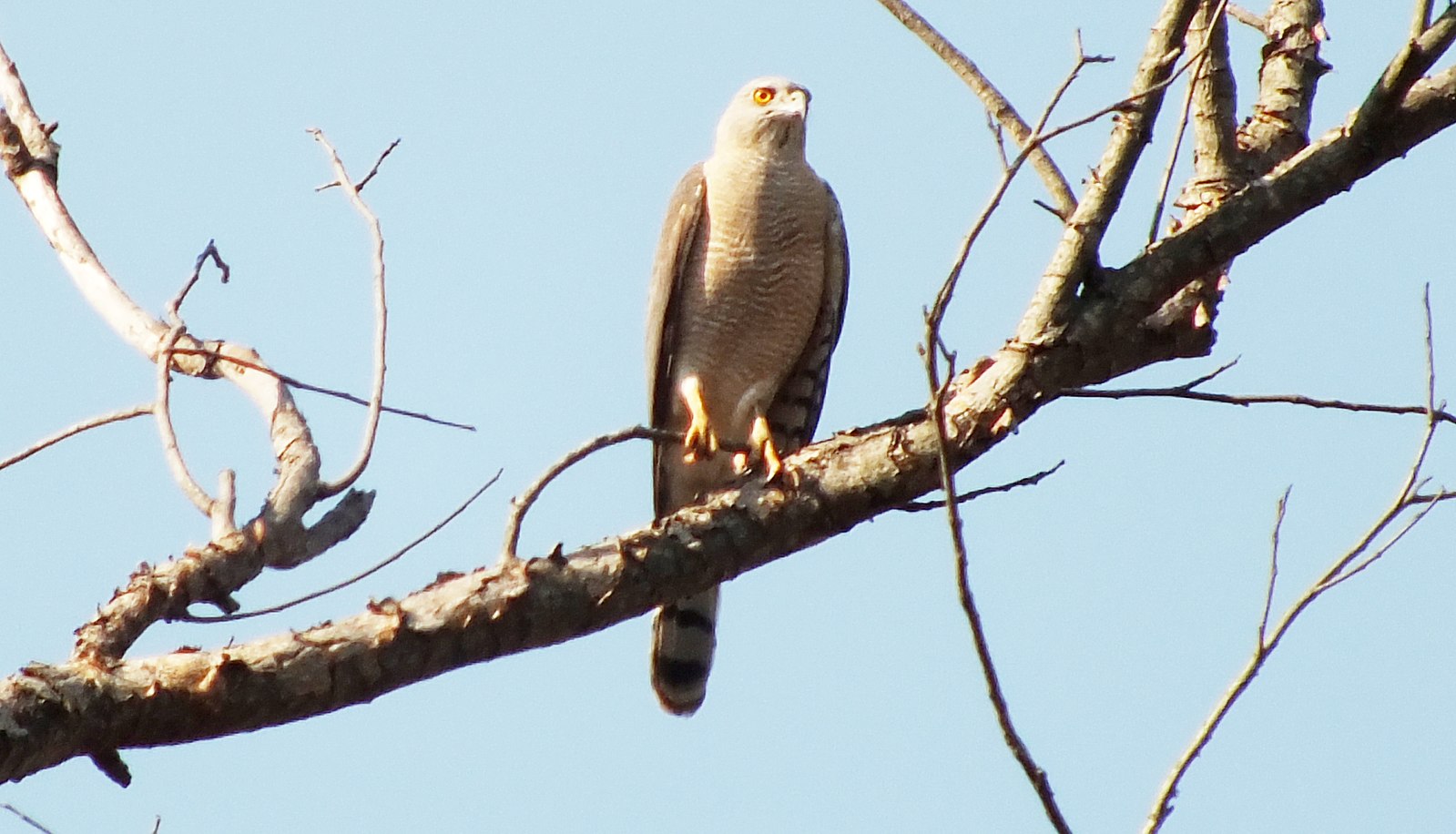Shikras, also known as Accipiter badius, are birds of prey found across Asia and Africa. Their unique mating behavior involves aerial courtship rituals and the exchange of prey between the male and female. During the breeding season, shikras engage in high-speed chases, undulating flights, and spiraling dances in the air to attract a mate.
Aerial Courtship Rituals
The mating season for shikras typically begins in the spring. During this time, the birds become more vocal and engage in a series of aerial displays to attract a mate. These courtship rituals include:
- High-Speed Chases: The male and female shikras chase each other through the jungle canopy and around trees, showcasing their agility and speed.
- Undulating Flights: The shikras take to the skies, soaring to great heights and circling each other in a series of undulating, up-and-down flights.
- Spirals and Tumbles: The pair of shikras will perform intricate aerial maneuvers, including spirals, tumbles, and stooping upon each other.
- Singing and Dancing: Throughout these aerial displays, the shikras will sing and engage in a dance-like behavior, further captivating their potential mate.
Prey Exchange
 Image source: SHIKRA by Shiv’s fotografia
Image source: SHIKRA by Shiv’s fotografia
After the initial courtship rituals, the mating pair of shikras will move to a tree branch, where the male will sometimes bring a prey item for the female. This act of prey exchange is believed to be a way for the male to demonstrate his hunting prowess and provide for the female, ultimately strengthening the pair bond.
Nest Building and Reproduction
Once the pair bond is established, the shikras will work together to build a relatively small nest made of sticks, often placed in the high fork of a woodland or exotic tree. The female does the majority of the nest-building work, while the male is responsible for bringing food to the female during incubation and to the female and young after hatching.
The female shikra lays 2-4 eggs and incubates them for approximately 3 weeks. The male is responsible for providing food to the female and the hatchlings, ensuring their survival and successful fledging.
Dietary Adaptations
Shikras have an amazingly varied diet, feeding on a wide range of prey, including lizards, frogs, large insects, termites, small birds, and small mammals. This adaptability allows them to thrive in a variety of habitats and ensures they have a reliable food source to support their mating and breeding activities.
Conservation Challenges
While shikras are currently classified as a species of Least Concern, they face various threats to their populations, including habitat degradation due to wood harvesting, overgrazing, insecticide use, and electrocution on power lines. By understanding their unique mating behaviors and habitat requirements, we can work to conserve these remarkable birds for future generations.
Reference:
– https://indianbirds.in/pdfs/IB_17_2_Suryawanshi_AccipiterBadius.pdf
– https://starofmysore.com/shikra-the-leopard-of-birds/amp/
– https://peregrinefund.org/explore-raptors-species/hawks/shikra
– https://recordsofzsi.com/index.php/zsoi/article/download/161628/111270


